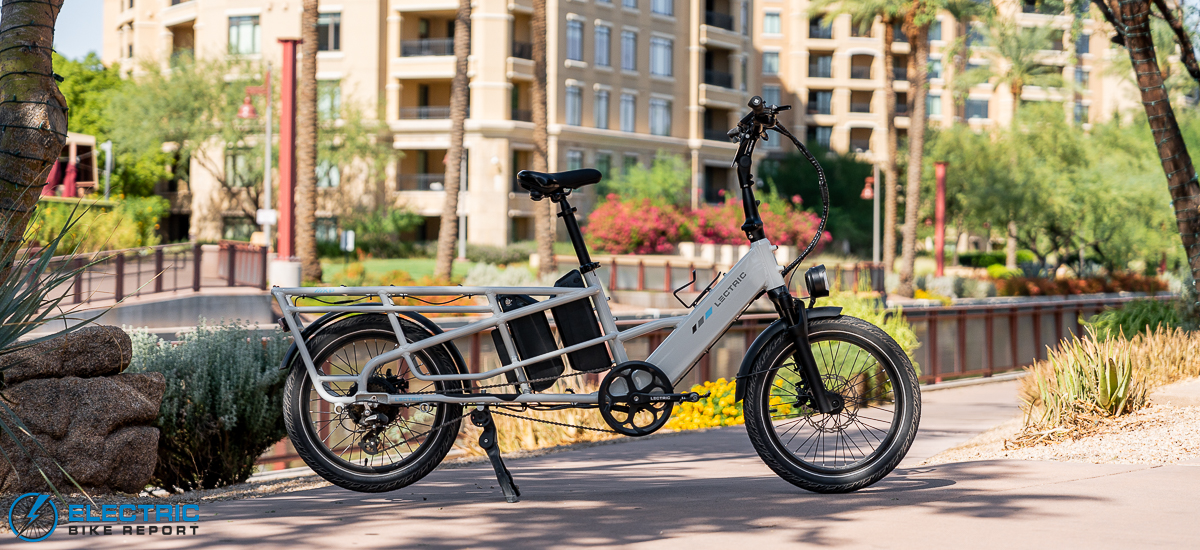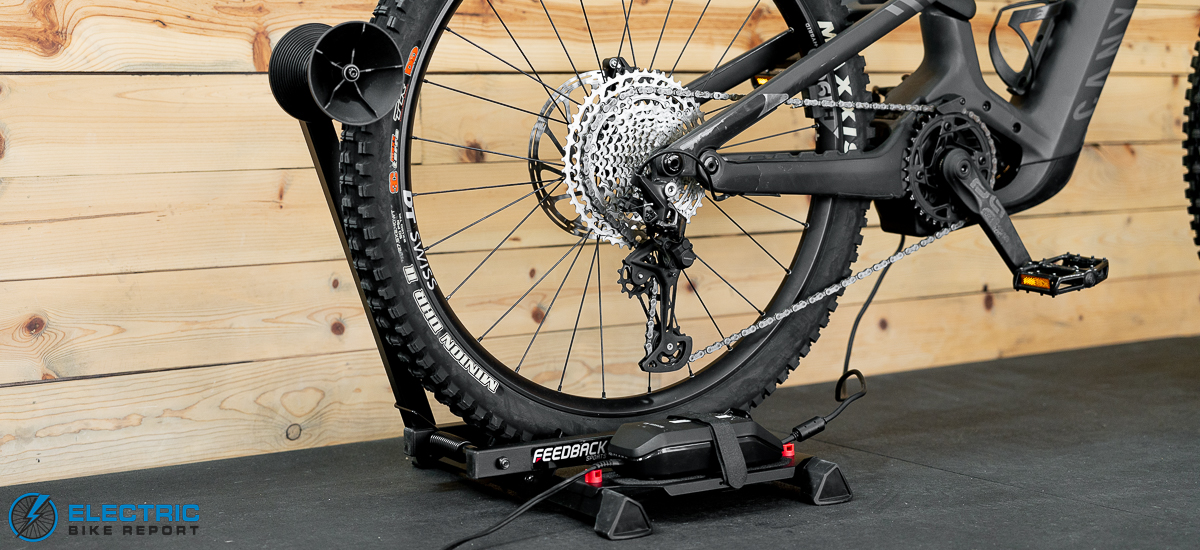
Electric bike batteries are one of the most important components of an electric bike. Without a good electric bike battery, you’re not going to get very far. Battery technology is evolving rapidly, so it’s hard to know what type of battery is best. Here’s a complete guide to battery types for electric bikes, plus how to get the most out of your battery (in terms of battery life and performance).
Video: The Differences between Various Electric Bike Batteries
First, here is a video about the differences between various electric bike batteries:
Related Post: 7 of the Best Cheap Ebikes, 2023
Lead-acid Electric Bike Batteries (SLA)
Lead-acid electric bike batteries are cheap and easy to recycle. However, they are sensitive to bad treatment, and they don’t last very long. They are not a good choice if you’re serious about using your bike to commute over fairly long distances.
Lead-acid batteries are cheap for several reasons. They weigh twice as much as NiMh batteries, and three times as much as lithium batteries. These batteries have much less usable capacity than NiMh batteries or lithium batteries. Also, they only last for half as long as nickel or lithium batteries.
Warning: if a cheap electric bike is advertised and the advert does not state what kind of battery it has, you can pretty much be certain that it has a lead-acid battery. It might be cheap, but that does not mean that it’s a bargain. This battery type might be good enough if you want the bike for light recreational use only. But if not, it would be better to avoid these batteries.

Nickel-cadmium (NiCd) Electric Bike Batteries
Weight for weight, nickel-cadmium (NiCd) batteries have more capacity than lead-acid batteries, and capacity is an important consideration on an electric bike. However, nickel-cadmium is expensive and cadmium is a nasty pollutant and hard to recycle.
On the other hand, NiCd batteries will last longer than lead-acid batteries. But the reality is that because they are so hard to recycle or get rid of safely, NiCd batteries are rapidly becoming a thing of the past. These are also not a good choice of battery type, regardless of price.
Nickel-metal Hydride (NiMh) Electric Bike Batteries
NiMh batteries are somewhat more efficient than NiCd batteries, but they are also more expensive. Most people report that NiMh offers little improvement in range over NiCd. On the other hand, they will last longer and are easier to dispose of correctly.
Nonetheless, NiMH batteries are also becoming a rarity, because the market place is being taken over by Lithium-ion (Li-ion) batteries.
Lithium-ion (Li-ion) Electric Bike Batteries

Lithium-ion have become the default battery, capturing over 90% of the market. But to complicate matters, there are many different kinds of Li-ion batteries. On the plus side, Li-ion batteries last longer and generate more power for their weight than other batteries. On the negative side, they are fussy little creatures, and require a genius-inspired smorgasbord of electronic features to prevent them from self-destruction and even catching fire.
Of course, none of those are your problems, as the manufacturer will have sorted out the genius side. But like all good things in life, this comes at a price: this battery type is very expensive, and shows no sign of getting cheaper.

Related Techie Post: All Garmin Edge Bike Computers Compared, with Comparison Chart and Videos
Lithium-ion Polymer (Li-pol) Electric Bike Batteries
This is a new one, and promises to be no better than the Li-ion battery type in terms of range, weight, or price. However, it can be molded into interesting shapes. They contain no liquid, so they don’t require the heavy protective cases that other batteries need. Also, this absence of free liquid theoretically means that they should be more stable and less vulnerable to problems caused by overcharge, damage or abuse. In general, they seem to be ideal for use in high capacity, low power applications – such as electric bikes.
Given the new trend to make electric bikes look just like other bikes, I am guessing that some creative manufacturers will come up with some radically cool ideas. I wouldn’t rush into buying one of these battery types, however, until they prove themselves in terms of battery life.
Lithium Cobalt (LCO) Electric Bike Batteries
This is another variation on Li-ion. It’s a relatively new kid on the block, and its proponents claim it has much higher energy density than other lithium batteries, so that it offers optimum power in a light, compact package. For example it is used in Optibikes, and the manufacturers claim “no other electric bike can go as far as an Optibike, guaranteed”. This is yet another one that still has to prove itself, though.
Related Post: 7 of the Best Cheap Ebikes, 2023
Lithium Manganese (LiMg204) Electric Bike Batteries
This is another new kid on the block, and is the same battery technology as the technology used in the Nissan Leaf hybrid car. Some claim it is the best of all. For example it is used in Elite Electric Bikes, and the manufacturers claim that it lasts longer and generates more power than other Lithium batteries.

Wrapping up the Electric Bike Batteries Debate
As you can see, it is hard to know whose claims to believe. It does seem however that lithium cobalt offers higher energy density, but that lithium manganese batteries are somewhat safer, and are more environmentally friendly. This comes from an unbiased source:
“Lithium Manganese provides a higher cell voltage than Cobalt based chemistries at 3.8 to 4Volts but the energy density is about 20% less. It also provides additional benefits to Lithium-ion chemistry, including lower cost and higher temperature performance. This chemistry is more stable than Lithium Cobalt technology and thus inherently safer but the trade off is lower potential energy densities. Lithium Manganese cells are also widely available but they are not yet as common as Lithium Cobalt cells. Manganese, unlike Cobalt, is a safe and more environmentally benign cathode material. Manganese is also much cheaper than Cobalt, and is more abundant.”
In sum, the best choice is definitely some kind of lithium ion battery, but the jury is still out on which is the best lithium ion battery. If the electric bike you are considering comes with any kind of lithium ion battery, you are off to a good start. Beyond that, you need to weigh up what is more important to you:
-
- proven safety and range (Li-ion);
- higher energy density (LCO);
- performance coupled with safety, but relatively new (LiMg204); or
- cool shapes and cutting edge (Li-pol).
This whole post is excerpted from my book, How to Buy the Best Electric Bike. Read all about my book here. It will save you a lot of time, and help you buy the best bike for your money.
How to Get the Most out of Lithium Electric Bike Batteries
No matter what kind of lithium battery you have, there is one Golden Rule for getting the most out of it: Keep it topped up! You will often hear battery life talked about in cycles. This may cause you to worry that if you keep charging your battery up when, for example, you have only used up a quarter of its power, then you are “wasting” an entire cycle. This is not the case at all – in fact, it’s more like the opposite is true. A lithium battery rated for 800 full cycles may very well get 2,000 half cycles.
So the best way to prolong the life of your battery is to charge it often. I achieve this by keeping a spare charger at work. I could manage both ways on one charge, but I know I would not be doing the battery any favors by almost completely discharging it. In fact, the best way to increase performance and lifetime on a lithium battery is to reduce deep discharge cycles as much as possible.
In fact, many people believe that you can double your battery’s life expectancy by discharging only 50% of capacity instead of 75%; and that you will get six times the battery life at 30% capacity usage per cycle.
Another way to prolong the life of your battery is to keep it exercised during winter (or any other time when you are not using it). I once almost destroyed a great li-ion battery by not using it for several months. There is an easy way to avoid this: just plug any battery you are not using into a digital timer switch, and program that device to charge the battery for 30 minutes per week. This will prevent your expensive battery from dying on you.
If you are using the battery daily, you just want to make it easy to charge it fully. So do yourself and your battery a favor, and either have a spare battery charger at your office, or else just carry the charger with you. Keep your battery topped up. It’s almost like parenting – don’t wait till your child is totally depressed or in deep trouble. Keep giving encouragement and support ALL the time. It’s the same with your bike battery. Don’t wait till it’s totally discharged to give it more charge. Charge it up all the time!
Did you like this post or find it useful? If so, please support us and our blog:
|
||
(Visited 106,943 times, 4 visits today)
Related







